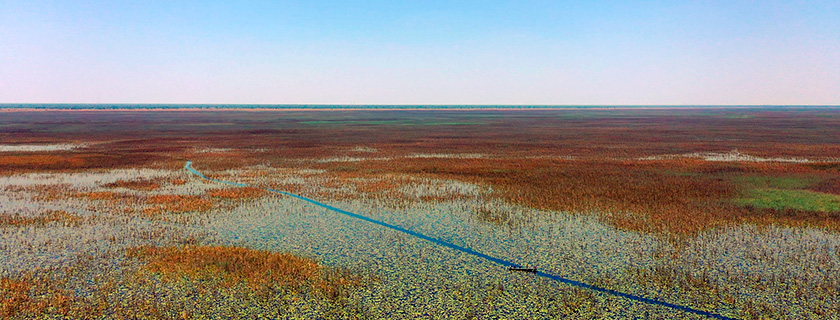Development of the Conservation Plan for Lukanga Wetland is in its final stages
After two years of in-situ research and data collection by NEMUS’ interdisciplinary specialists and local partners, and despite logistical complications exacerbated by the COVID-19 pandemic, NEMUS’ work in the devising of the Conservation Plan for the Lukanga Wetland and Upper Kafue Basin (Zambia) is nearly finalized.
The Lukanga Wetland area, a 40 to 50 km wide circular depression with a catchment area of 58,909 km2, is a key wetland in the country and is interconnected with the neighbouring Kafue River through seasonal waterways.
Zambia Environmental Management Agency, with the support of World Bank funding, requested the development of a conservation plan for the wetland, considering the full array of impacts that could arise from its catchment area and from the Upper Kafue Basin. The latter crosses the Copperbelt and Central Provinces, known for extensive mining activities and large irrigation schemes, which are very probable and worrying sources of pollution.
The goal was to approach the situation in an integrated manner, evaluating the upstream-downstream interactions and how these affect the ecosystem services and livelihoods of the communities that rely on the health of the Wetland. NEMUS is nearing the fulfilment of this goal after two years of compilation of climatic, hydrologic, hydrodynamic, hydrogeologic, ecologic, and socioeconomic data, a significant part of which from in-situ information collection and stakeholder engagement actions.
As part of the closing procedures of the consultancy services, NEMUS held a workshop and a training course – both for ZEMA’s team, other cross-sectoral governmental staff and relevant stakeholders – aiming to present and discuss the draft conservation plan and to build capacity on the implementation and follow up of the conservation plan.
The three-day final stakeholder consultation workshop was held in June and tackled three main themes: Conservation planning framework and assessment; Conservation and management zonation and strategies; and, Monitoring and implementation.
The training course was carried out at the end of July / beginning of August, also for three days, and focused not only on the implementation and follow up of the conservation plan (including the monitoring plan contained therein) but also on the use of the modelling tool adopted for the cost-benefit analysis and scenario assessment.
NEMUS’ conservation plan spans over 30 years (2020 – 2050), includes management tools and recommendations, and assesses economic, environmental, and societal losses based on simulations that consider the ecosystem services that are most important and most relevant to the region.

